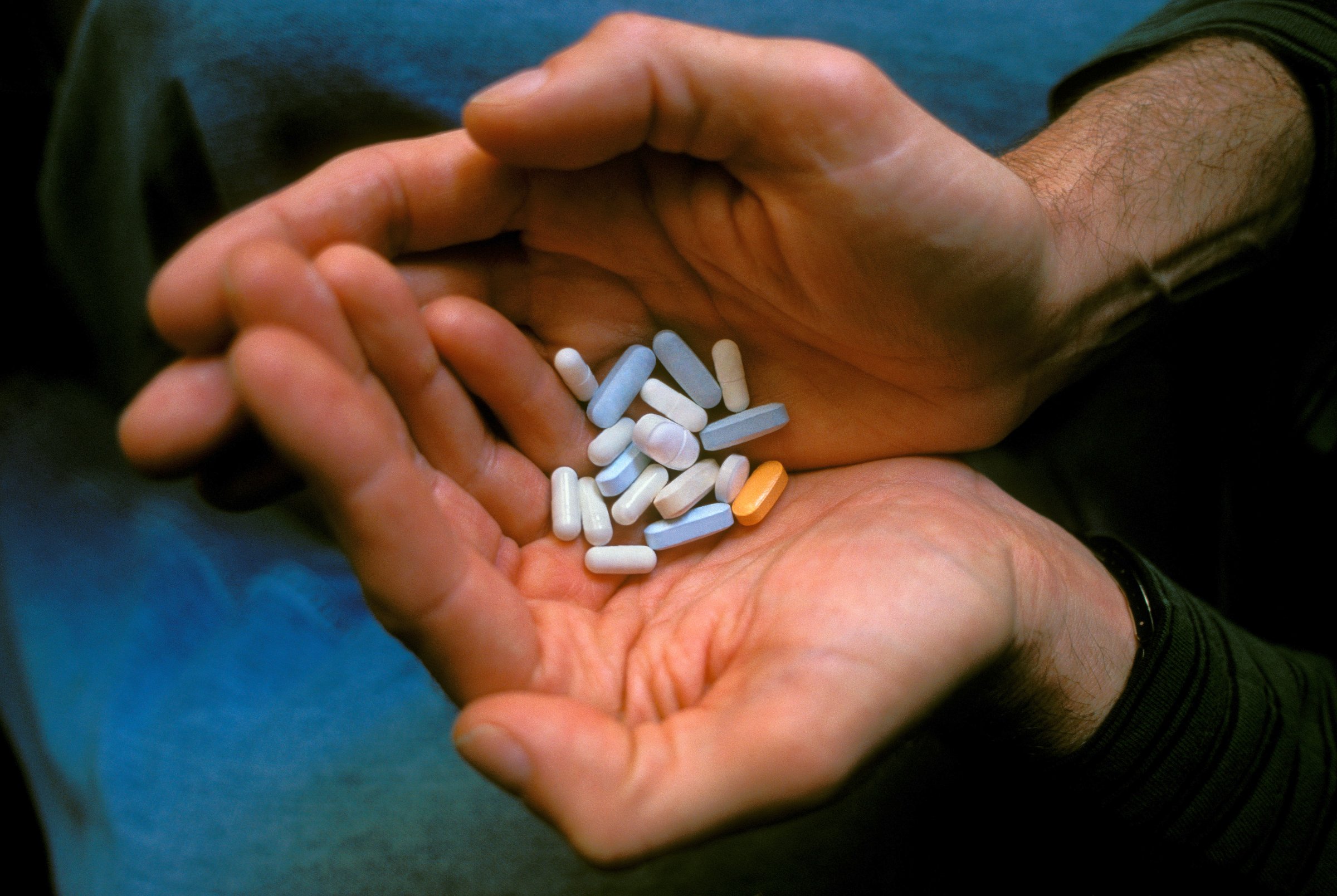
Antiretroviral drugs, which are used to treat the HIV infection, have helped curb the rapid-fire spread of the AIDS epidemic, especially in the developed world. Their effects are impressive. Among heterosexual couples where one partner is HIV positive but takes antiretroviral drugs (ARVs) to control the virus, studies have showed that the medications lowered risk of transmission to the HIV-negative partner by up to 96%. That led the FDA in 2012 to approve the first drug, Truvada, that healthy people could take to prevent HIV transmission.
But whether the same benefit held for gay men has remained an open question, since the risk of transmitting HIV is about 10 times greater during anal sex than during vaginal sex. Early results suggested the same benefits might be possible among gay men, but in a groundbreaking study published in JAMA, scientists provide the first evidence that ARVs can help to significantly lower rates of transmitting the virus from HIV positive gay men to their steady, HIV-negative partners.
In the study, researchers led by Dr. Alison Rodger at University College London found similar dramatic reductions occurred among gay men, even if they did not use condoms regularly. In fact, Rodger’s team found no new infections among HIV negative partners among the 900 couples in the study who reported having sex without condoms routinely.
The results show that “there is no longer any question whatsoever that treatment for HIV is going to be a really fundamental part of our prevention strategy,” says Dr. Paul Volberding, director of the AIDS Research Institute at University of California San Francisco, who was not part of the study. “This closes the loop in terms of our understanding of what it means to suppress HIV. It’s a very important study.”
The results are especially encouraging given the greater risks of transmission for anal sex. “Ours is the first data available on anal sex among gay men, for whom there was a huge gap in evidence,” says Rodger.
Rodger followed the couples for nearly two years to track new infections and tested the HIV negative partners every six months to a year. She and her team also asked the HIV-positive partner how faithfully he took the ARVs and his sexual activity within the relationship and with partners outside of the relationship. To track the infections, the team genetically sequenced HIV infection among the positive partners and did the same for any HIV negative people who acquired the infection.
During the study, 11 of the HIV negative people got the virus, but none from their steady partner. The genetic analysis showed that all new infections, including one among a heterosexual couple, occurred outside of the relationship.
The fact that no new infections occurred due to condomless sex among the steady partners supports the push toward universal testing and treatment for HIV. Despite improved awareness about the disease, in the U.S. 15% to 18% of people who have HIV aren’t aware they are positive. Knowing their HIV status is an important first step in seeking treatment; the earlier ARVs are started, the more effective they are in keeping levels of the virus down to where they are less likely to be transmitted, even during condomless sex.
That’s particularly important since the study found that 30% of gay men had condomless sex with partners outside of their relationship, accounting for more than 22,000 such encounters during the study. Some of these partners likely did not know or did not reveal their HIV status. “Our study supports the need to get people tested and on to treatment if they are positive,” Rodger says. “Whether you are heterosexual or gay, it will make an impact on transmission.”
The results should provide public health and policy makers more confidence that programs that support universal testing and treatment for people who are HIV positive will be the most effective way to slow and eventually stop the epidemic. Such programs are taking hold in cities like San Francisco and New York, fueling hopes of curing AIDS. But funding such programs and overcoming the stigma that still shadows HIV testing and treatment remain serious barriers in other parts of the world. “This will hopefully result in other communities understanding that treatment efforts can really reduce incidence of HIV and reduce transmission,” says Volberding. “I think this will be a important for evidence that will hopefully result in a lot more universal testing and treatment programs across the world.”
More Must-Reads from TIME
- Cybersecurity Experts Are Sounding the Alarm on DOGE
- Meet the 2025 Women of the Year
- The Harsh Truth About Disability Inclusion
- Why Do More Young Adults Have Cancer?
- Colman Domingo Leads With Radical Love
- How to Get Better at Doing Things Alone
- Michelle Zauner Stares Down the Darkness
Contact us at letters@time.com